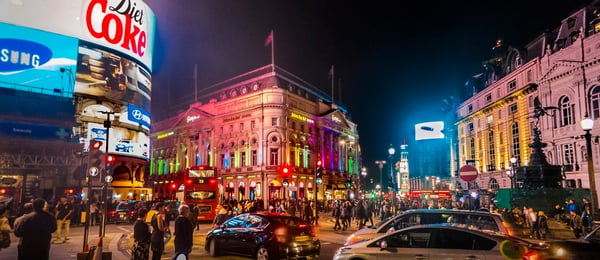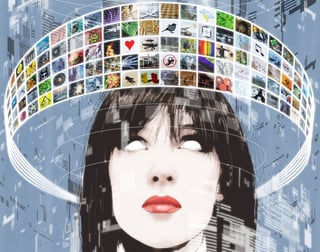Today, Piccadilly Circus in London is alight once again, now equipped with so-called “super billboards,” bringing the advances of machine learning (ML) and artificial intelligence (AI) in advertising to center stage (or center circus, if you will).

The new billboards are equipped with hidden cameras that gather data from both foot and road traffic and can serve advertisements based on that data. Not just collectively, but down to an individual level - one of its most touted features is the ability to target ads based on the make and model of cars actually driving by in real time.
These days, of course, ML and AI are hot topics across all industries, not just advertising. Yet interestingly, while much of the public’s thoughts around AI seems to be somewhat negative (deeming its implications as too “Big Brother” for comfort), the advertising industry - which historically has a somewhat negative image itself - has slipped under the radar in this regard.
How Advertisers Use Data Science, ML, & AI
If there’s one industry that has swiftly and uniformly transitioned into the world of ML and AI, welcoming it with open arms, it’s advertising. And for good reason - most of the ML and AI use cases in advertising are centered around eliminating marketing waste, which ultimately means only spending money on those that will buy.
Advertisers have been using ML for quite some time for a number of use cases, including:
- Predicting which messaging will resonate with what users
- Intent prediction (i.e., how likely is this person buy item x in the next month?)
- Uplift modeling
- Optimal ad bid per impression
- Audience clustering
- Fraud detection
- Attribution (i.e., measuring the precise impact of certain ads)
- Measuring the customer journey across multiple channels
- Using AI to actually make ads (crazy!)
Why Haven’t We Really Noticed?
ML and AI have been able to flourish in the advertising space for two primary reasons.
The first is that, from the public’s point of view, it’s low risk. When we talk about AI dominating in other spaces, like health care, predictive maintenance, banking, or even in larger contexts like smart cities, the question is always: well, what if the machine fails? What if the machine is wrong? Consequences, in these instances, can be grave. But with advertising, the worst that happens is that the customer doesn’t buy something. Or there can be a PR nightmare for ad targeting mistakes, but that’s less of an issue for the customer, in most cases.

But more importantly, ML and AI represent an opportunity in advertising because they can actually in many ways make advertising less noticeable. And if it's more targeted and therefore more effective, perhaps less prevalent. When advertising is not properly targeted, it becomes glaringly obvious (and often irritating). When it’s extremely well targeted, it’s helpful. If advertisers show me something I’m actually considering purchasing, especially if it contains information I’m looking for, it could feasibly help me make my decision. If it’s tailored to what I like and visually appealing, even better.
First Steps for Advertisers
For advertisers who have not yet fully embraced the ML and AI wave, it’s most definitely time to get started. Check out our latest case study on one media company’s first steps in more efficient and effective hyper-targeted advertising. Also, don’t forget the importance of going into production, which is always important in data science but especially critical in this industry.




